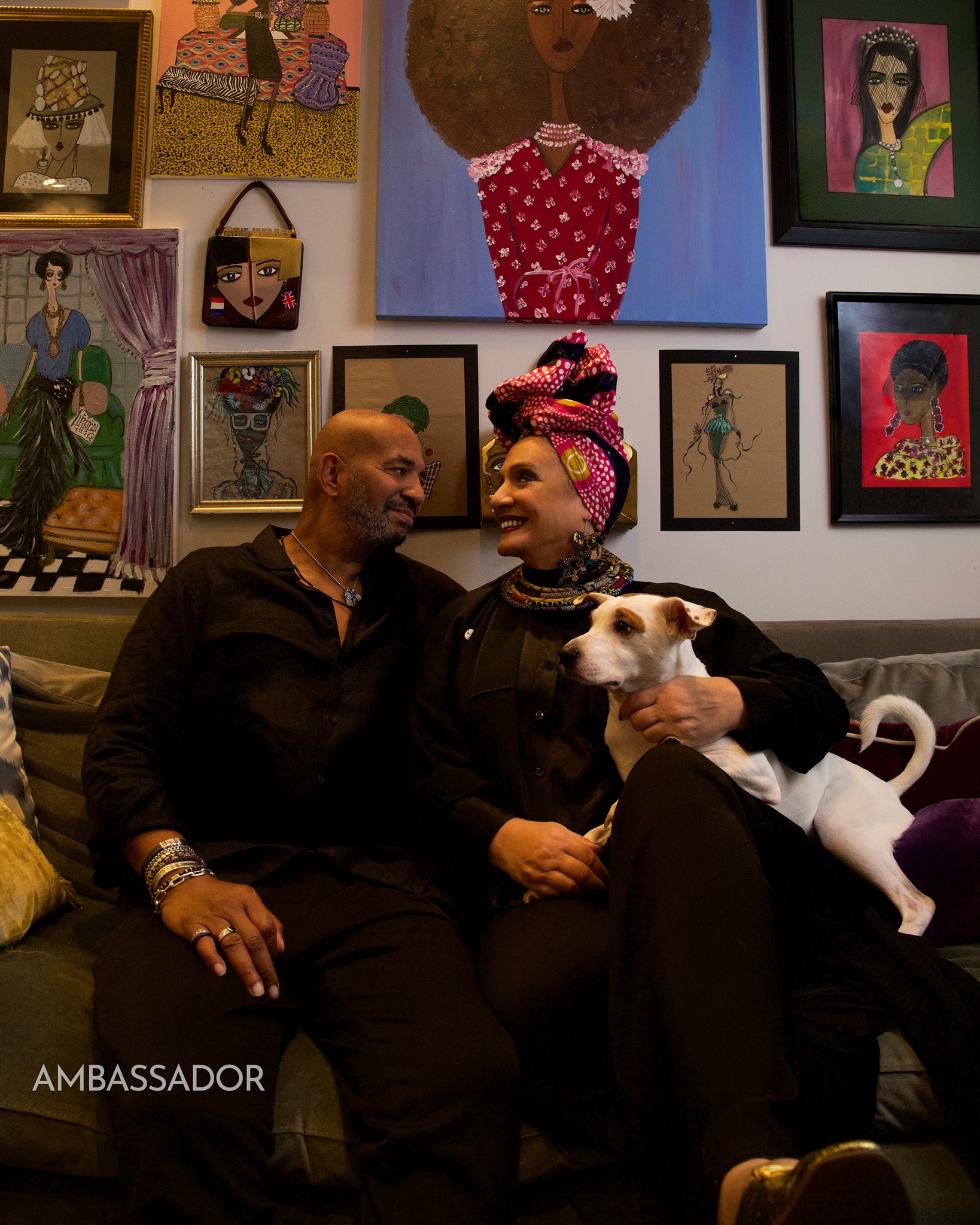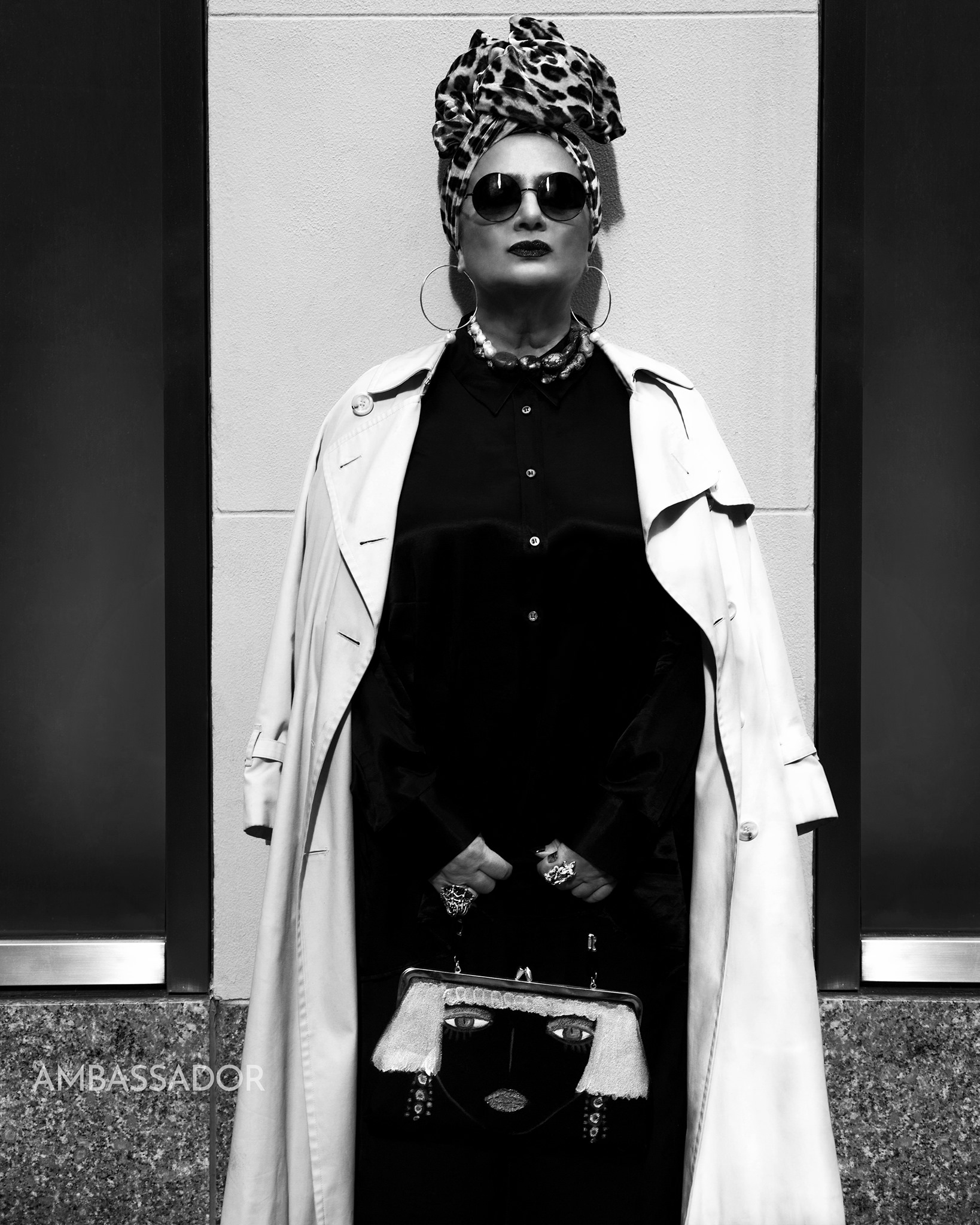MUSA
Where do you get your amazing sense of style?
REBECCA
Thank you. I think it’s always being honest with myself. Comfort is a big part of my style. When I was a young girl studying film, TV looking back over the glamour that had a big impact on me. I loved the drama of fashion
MUSA
Women have also had an enormous impact on you. What is it about women that has influenced you creatively?
REBECCA
It’s the uniqueness, the art of being of each woman. I always try to encourage women to find their voice. Don’t suppress your voice. If you’re a tall woman embrace your height. If you have a crooked nose own it. Your hair naturally curly or straight embrace it. Instead of changing it embrace it. Dressing women for decades I began to understand what women are up against. Their is so many Isms that women have to face. From skinnyism, sexism, poorism, richism. Women really need to own who they are and be proud of who they are.
MUSA
Sisterhood is so important to you. How did Stay Home Sisters movement come about.
REBECCA
When Covid started in February none of us were prepared for it. We lost our security, we lost our jobs, we lost our sanity, we lost opportunities. The city where we live was really going through hell. The most important thing for all of us to have done was to stay home. As an artist that’s not a difficult thing but I had loss an exhibit, I loss books that went onto a shelf. I started painting what I was witnessing. But it wasn’t giving me satisfaction. I felt so helpless I heard the sirens all day. Ambulances. I said, “what can I do to help?” So I thought let me reach out to women and ask them for their stories. I’ll paint them. Maybe by doing that we can start documenting. I didn’t do it thinking their would be a sisterhood. I thought maybe this would lift some people. And then the women started reaching out to each other then I realized this is remarkable. Women from all over the world reaching out to each other. And that’s how it became a sisterhood. That’s how Stay Home Sisters came to be. Stay Home Sisters is an act of documentation during a pandemic of women hearing each other’s stories which neutralized everyone. In the sense that it didn’t matter whether you were a CEO, a nurse, teacher, a single mom, dancer, actor, cop. It didn’t matter. We were all women we all had our own issues. And some of them were really similar. And I think women didn’t feel so alone. Sometimes it’s easier talking to a stranger than somebody that you know. Here women were talking across borders, socioeconomic situations, ages, races. It was really hard. Then we had all of the race issues came up. George Floyd, and all of that further complicated our emotional state. People were depressed and frightened. I think reaching out gave them comfort. Here we are now connecting women across six continents.
MUSA
What’s next for Rebecca Moses?
REBECCA
I ask myself that. All I can say is that this year as dark and as challenging as it has been. The silver lining for me has been I’ve opened my world and my talent into a way I never thought it could go. I didn’t know I could do real portraiture at this level. I didn’t know I could communicate with women and bring them together. It was interesting how my art made this happen. Art and my passion. I love people. I love to see people come together that they have a lot more in common then they have different. The last four years in this country we have only seen people divided. My world is a very colorful world. My life has always been about embracing people from all over. There is so much to learn from each other.






